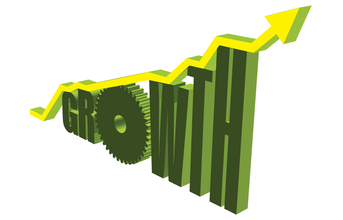
Output and new orders expanded at the fastest paces since February.
Indian manufacturers signalled a rebound in production volumes and new work in August, according to the latest PMI data. The upturn was led by an improvement in customer demand as client businesses reopened, after lockdown restrictions eased amid the coronavirus disease 2019 (COVID-19). Output and new orders expanded at the fastest paces since February. Meanwhile, job cuts continued into August, extending the current sequence of decline to five months.
At 52.0 in August, the headline seasonally adjusted IHS Markit India Manufacturing Purchasing Managers' Index® (PMI®) rose from 46.0 in July and signalled an improvement in operating conditions across the manufacturing sector following four consecutive months of contraction.
For the first time since March, output expanded in the Indian manufacturing sector in August. Production growth was largely driven by greater client demand for Indian goods following the resumption of business operations, according to firms.
The decline in foreign exports weighed slightly on overall new orders as firms cited subdued demand conditions from abroad. That said, new business received by Indian manufacturers expanded at the fastest pace since February.
Despite an expansion in new orders, job shedding continued in the Indian manufacturing sector. The relocation of employees following COVID-19 was often linked to the reduction in staffing numbers. The pace of contraction in workforce numbers softened from that seen in July but remained strong overall.
Capacity restraints in employment drove the rise in incomplete work at Indian manufacturers midway through the third quarter. The rate of increase in backlogs was the fastest since December 2012.
Commenting on the latest survey results, Shreeya Patel, Economist at IHS Markit, said: "August data highlighted positive developments in the health of the Indian manufacturing sector, signalling moves towards a recovery from the second quarter downturn. The pick-up in demand from domestic markets gave rise to upturns in production and input buying. "However, not all was positive in August, delivery times lengthened to another marked rate amid ongoing COVID-19 disruption. Meanwhile, employment continued to fall despite signs of capacity pressures, as firms struggled to find suitable workers. "The rate of input price inflation was solid, following four monthly declines in cost burdens. Firms, however, continued in their efforts to drive sales amid greater competitive pressure and reduced their selling prices further."
Higher levels of production supported a modest rise in the quantity of purchases during August. However, firms noted a limited availability of goods, which onset a further reduction in stocks of purchases, thereby extending the current rate of depletion to five months.
Supply chains were disrupted for a sixth consecutive month, with firms citing transportation restrictions, supplier delays and capacity pressures as the main drivers of lengthening delivery times.
Reports of higher raw material costs due to supplier shortages and transportation delays stemming from the COVID-19 pandemic, resulted in rising input prices during August. Cost burdens rose for the first time since March, with the rate of input price inflation at its highest since November 2018. Despite rising cost burdens, Indian manufacturers reported lower factory gate charges due to competitive pressures and efforts to boost sales.
However, the rate of decline eased to only a fractional pace that was the weakest in the current sequence of decrease. Looking ahead, Indian manufacturers remained optimistic for the next 12 months. Positive sentiment was often attributed to hope of the passing of COVID-19 pandemic, improving client demand, and new business wins. Nevertheless, market uncertainty and the onset of a global recession weighed slightly on the degree of confidence which was below the series average in August.
End
Source: IHS Markit

































